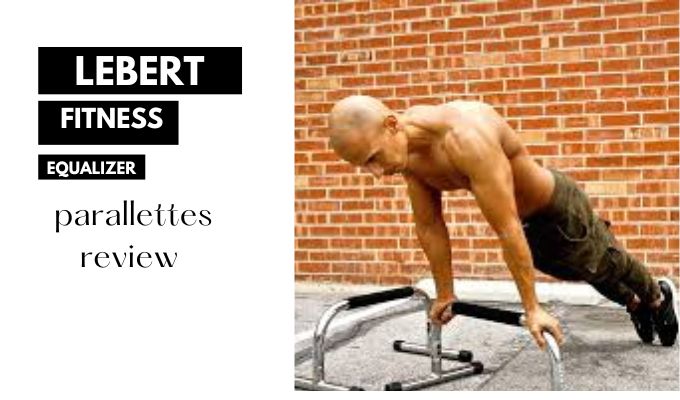Do you find your hard work at the gym not paying off as expected? It might be a case of Tight Hip Flexors Dilemma. These often overlooked muscles play a crucial role in your fitness journey. Imagine them as the unsung heroes sabotaging your gains. Tight Hip Flexors Dilemma can restrict your range of motion, hinder proper form, and even lead to nagging injuries. In this fitness puzzle, these muscles are the missing link between effort and outcome. Let’s unravel the mystery and explore how addressing tight hip flexors can be the game-changer you’ve been searching for in your fitness endeavors.

Are Tight Hip Flexors Ruining Your Calisthenics Results?
Tight Hip Flexors Dilemma can significantly impact your calisthenics performance and hinder the results you desire. These muscles play a crucial role in various movements, and when they are tight, they can lead to poor form, reduced range of motion, and increased risk of injury. This guide explores the effects of tight hip flexors on calisthenics and provides solutions to address this issue.
Understanding Tight Hip Flexors
Hip flexors are a group of muscles that allow you to lift your knees towards your chest and bend at the waist. Prolonged periods of sitting, lack of stretching, and improper form during exercises can contribute to tightness in these muscles. When tight, hip flexors can limit your ability to perform calisthenics movements effectively, impacting exercises such as leg raises, knee tucks, and L-sits.
Balancing Hip Flexors and Overall Fitness
Maintaining balanced flexibility in your Tight Hip Flexors Dilemma is essential for optimal calisthenics performance. Incorporating targeted stretches and exercises to improve hip flexor flexibility can enhance your overall range of motion, allowing for better execution of exercises and reducing the risk of injuries.
MECE Solutions for Tight Hip Flexors
-
Stretching Routine:
Implement a regular stretching routine that focuses on Tight Hip Flexors Dilemma. Include dynamic stretches like leg swings and static stretches such as lunges to improve flexibility.
-
Mobility Exercises:
Incorporate mobility exercises like hip circles and leg lifts to promote better range of motion in the hip flexor muscles.
-
Strengthening Exercises:
Include strengthening exercises for the opposing muscle groups, such as the glutes and hamstrings, to maintain balance and alleviate tension in the hip flexors.
-
Proper Warm-Up:
Always warm up before calisthenics sessions. A dynamic warmup that targets the entire body, including the Tight Hip Flexors Dilemma, can prepare your muscles for the demands of the workout.
MECE Solutions in Action:
Incorporate these solutions into your calisthenics routine to address Tight Hip Flexors Dilemma and optimize your results.
Additional Resources:
Explore related topics to enhance your calisthenics journey:
– Gloves vs No Gloves for Calisthenics:
Consider the pros and cons of wearing gloves during calisthenics to make an informed decision that suits your preferences.
– Calisthenics Workout Routine for Beginners:
Start with a beginner-friendly workout routine to build a solid foundation for more advanced calisthenics exercises.
– Bar Brothers System Review – Is It Worth It?
Learn about the Bar Brothers System and determine if it aligns with your calisthenics goals.
– How to Avoid Bodyweight Training Injuries: Train Without Pain:
Understand injury prevention strategies to ensure longevity in your calisthenics journey.
–Use of Exercise Bands for Calisthenics:
Discover how incorporating exercise bands can add variety and resistance to your calisthenics training.
Calisthenics for Beginners: 50 Bodyweight Exercises
Explore a diverse range of bodyweight exercises suitable for beginners to diversify your calisthenics routine.
-The benefits of weighted calisthenics can be derived from bodyweight training
Learn how adding weight to your calisthenics exercises can intensify your workouts and lead to greater gains.
– What is Calisthenics?
Gain a comprehensive understanding of calisthenics and its benefits for strength, flexibility, and overall fitness.
Conclusion:
In summary, Tight Hip Flexors Dilemma pose a significant threat to calisthenics results, affecting form, range of motion, and injury risk. Address this issue with a well-rounded approach, including targeted stretching, mobility exercises, and strength training. The provided guide offers practical solutions and resources for a holistic calisthenics journey. Prioritize hip flexor flexibility alongside overall fitness to optimize performance, prevent injuries, and achieve long-term success in calisthenics. Stay committed, stay flexible, and watch your results improve.
FAQS:
What are the disadvantages of tight hip flexors?
- Limited Range of Motion: Tight hip flexors can restrict the range of motion in the hip joint, leading to difficulties in activities that require flexibility, such as bending, squatting, or lunging.
- Poor Posture: Tight hip flexors may contribute to poor posture, as they can pull the pelvis forward and tilt it downward. This can result in an exaggerated curve in the lower spine, leading to issues like lower back pain.
- Back Pain: The tension in the hip flexors can contribute to lower back pain, as the tightness may cause the lumbar spine to be pulled into an unnatural position.
- Hip Pain: Tight hip flexors may cause discomfort or pain in the hips themselves, affecting the ability to move freely and engage in physical activities.
How do tight hip flexors affect you?
- Impaired Functionality: Tight hip flexors can hinder the proper functioning of the hip joint, making it challenging to perform activities that involve hip extension, such as walking, running, or climbing stairs.
- Muscle Imbalances: When hip flexors are consistently tight, they can create imbalances in the muscles around the hip and pelvic region, potentially leading to issues like muscle strains or overuse injuries.
- Compromised Core Stability: Hip flexors play a role in stabilizing the core. Tightness in this area can negatively impact core stability, which is essential for overall body strength and balance.
Are tight hips permanent?
Tight hips are not necessarily permanent. Regular stretching and exercises targeting the hip flexors can help improve flexibility and alleviate tightness. Consistent physical activity and a focus on proper posture can contribute to preventing and reducing hip tightness.
What happens when you have chronically weak hip flexors?
- Reduced Stability: Chronically weak hip flexors can contribute to reduced stability in the hip joint, affecting overall balance and coordination.
- Compromised Movement Patterns: Weak hip flexors may alter normal movement patterns, potentially leading to compensations in other muscle groups and increasing the risk of injury.
- Lowered Athletic Performance: Athletes with weak hip flexors may experience decreased power and efficiency in movements that involve the hip, such as sprinting or jumping.
- Increased Risk of Injury: Weak hip flexors may contribute to an increased risk of injuries, especially in activities that require sudden bursts of power or changes in direction.


